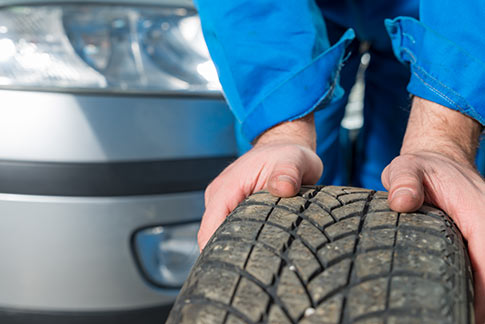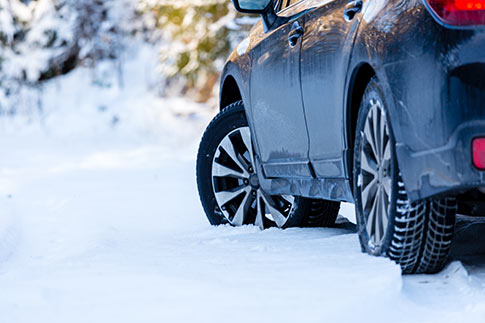Quick guide to buying winter tires

Quebec’s harsh climate calls for winter tires, which are essential for traction on snow and ice, control during turns and effective braking. Planning on buying new tires? Here’s what you need to know to make an informed decision.
Winter tires: mandatory in Quebec
The Highway Safety Code is clear: between December 1st and March 15 (beginning in 2019, motorists will need to have their winter tires installed by December 1), all passenger vehicles operated on Quebec roads must be equipped with winter tires bearing the mountain and snowflake icon, otherwise their drivers may be fined between $200 and $300. Apart from the deadline, temperature is the main factor in determining when to make the switch.
CAA-Quebec recommends installing winter tires as soon as the mercury begins to hover around 7°C for a few consecutive days. This way, vehicle owners are sure to be able to cope with snowfall that sometimes occurs earlier than expected.
When should you replace your winter tires?
Winter tires are an expense that some people tend to put off, but this decision has its consequences. Tread wear, and not the owner’s budget, should determine the right time to replace them. The law states that tire tread depth must be at least 2/32 of an inch, a measure that CAA-Quebec deems insufficient to ensure safe driving. The association recommends a minimum depth of 6/32 of an inch before starting the season, which you can measure using a quarter: if you can see the tip of the caribou's snout, tire wear is critical. Be sure to measure in 3 places: the inner, middle and outer grooves. Watch the video
Factors to consider when making your purchase
After an inspection, you determine that you need to buy new winter tires. Before getting started, you should know that there are specific tires for every car, every driver and... every type of driving. Here are some things to consider:
The use you make of your vehicle
Before buying your winter tires, take some time to ask yourself a few questions. Do you drive more often on ice or snow? In the city or the country? What is your driving style? Do you need studded tires? On what kind of surface do you drive most? By precisely establishing your needs, you’ll be able to choose winter tires that are perfectly suited to your type of driving and vehicle.
The price
Price is generally a reflection of quality, so be sure to keep an eye out for sales from well-known manufacturers. Keep in mind, however, that this is far from being the only factor to consider.
The way the tire is made
The tread and rubber compound that make up the tire differ from one model to the next. A winter tire’s tread must be designed to grip the various surfaces on which the vehicle will likely be driven in winter. Some models have lateral blocks that provide better grip when turning. The smoothness of the ride and durability must also be taken into account when making the purchase, hence the importance of consulting a specialist before making a choice.
Buyer beware

Are you tempted to buy your tires online or trust a friend’s advice? Better to rely on the recommendations of a specialist, who can accurately determine the model you need. Shop at a reputable retailer and avoid obscure brands sold at a discount online: the tires may have been stored for years before being sold to you. An expert advisor should be able to suggest various tire models after determining your needs. Don’t hesitate to ask questions about the specific features of each model. If you’re thinking of opting for used tires, be aware that you may have to replace them earlier than expected in case of structural defects or excessive wear. CAA-Quebec Mobility Advisory Services can help you choose your tires.
Proper installation is key to your safety

Lastly, be sure to have your winter tires installed by a professional, who will be able to ensure that they’re perfectly adjusted to your vehicle. Member outlets of CAA-Quebec’s Approved Auto Repair Services network across the province all have qualified employees. If you’re used to installing them yourself or if they’re already mounted on rims, be aware that overtightening could cause you to lose a wheel, leading to an accident. It’s a question of safety for you and other drivers.
Planning on changing your tires yourself this season? Be sure to watch our video “Comment changer les pneus de sa voiture soi-même” (in French only).